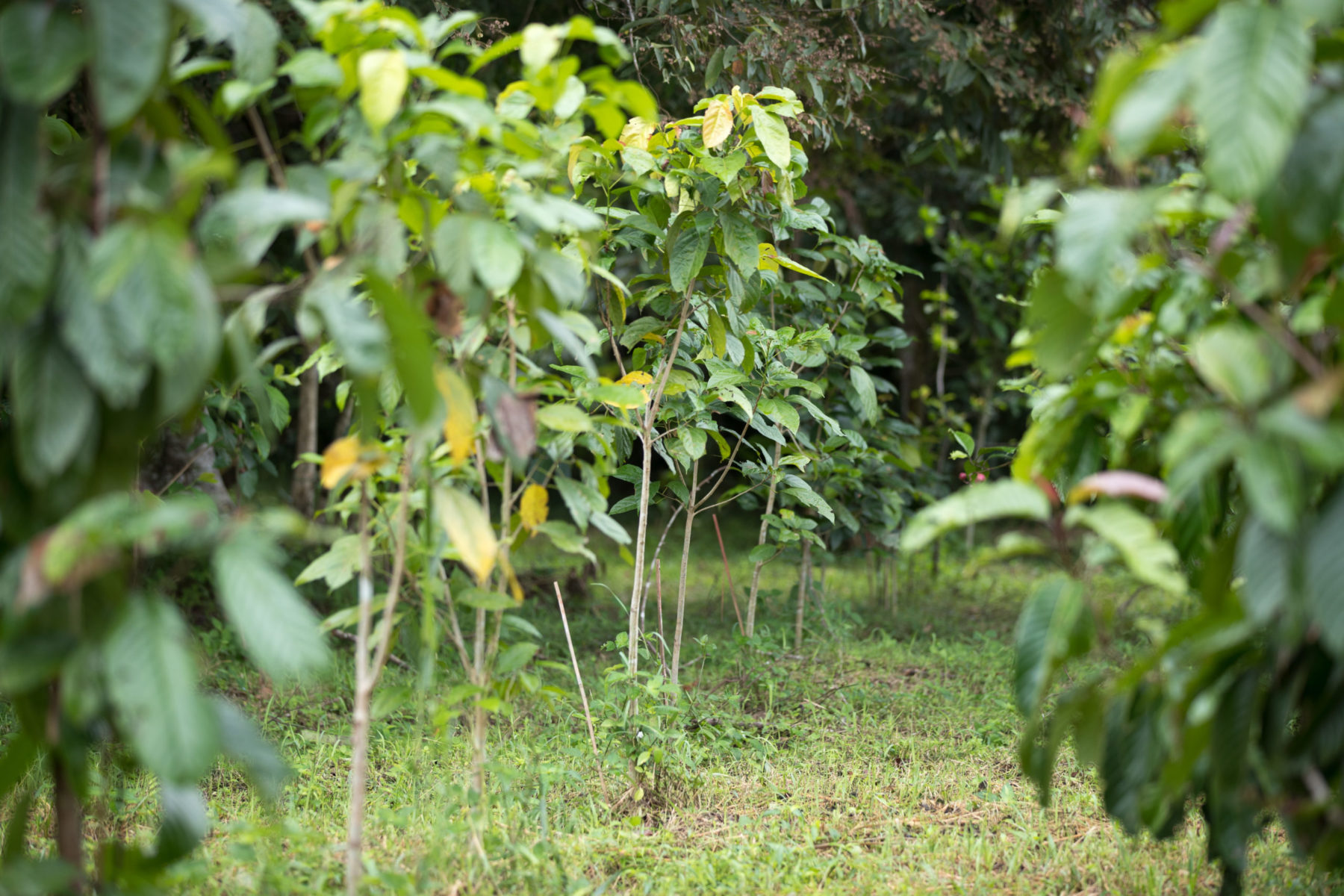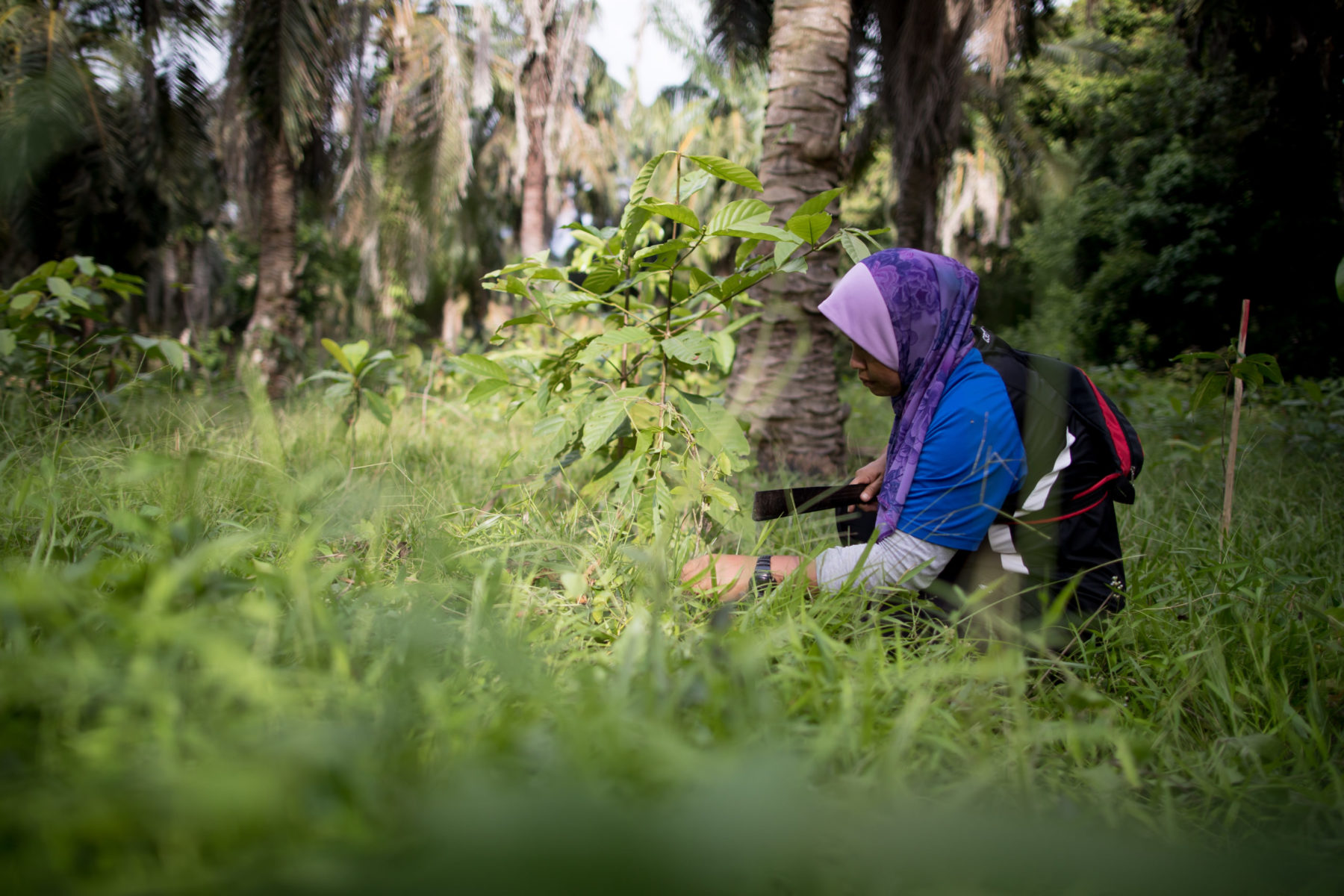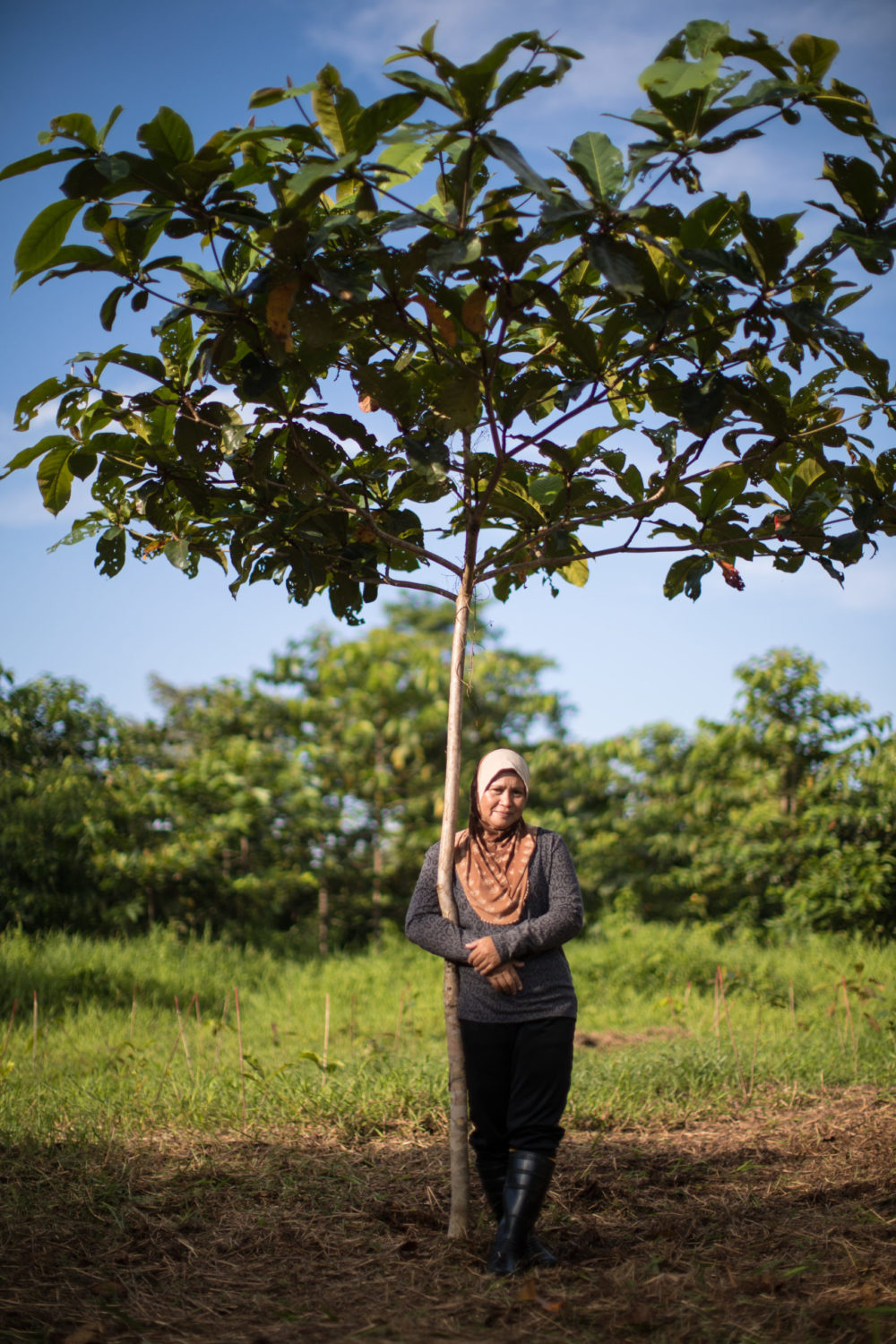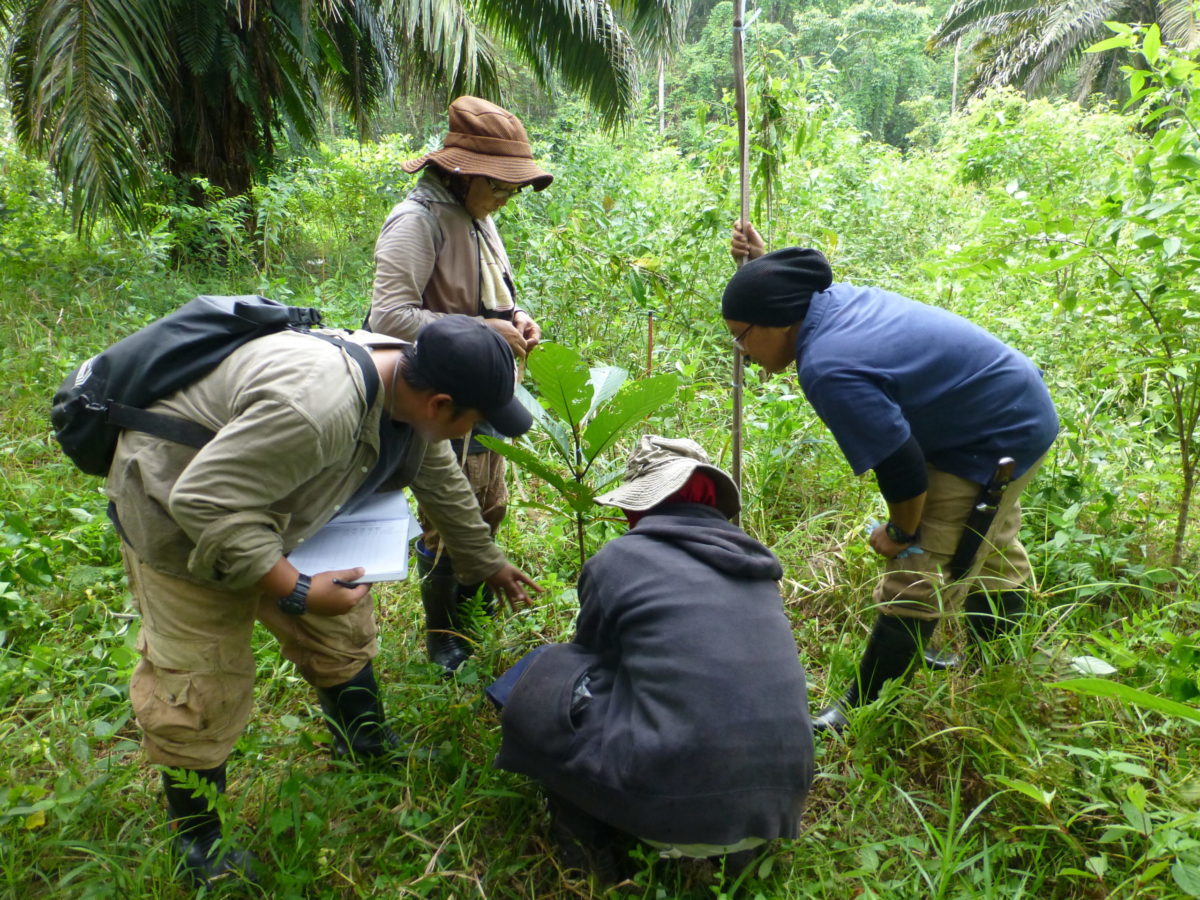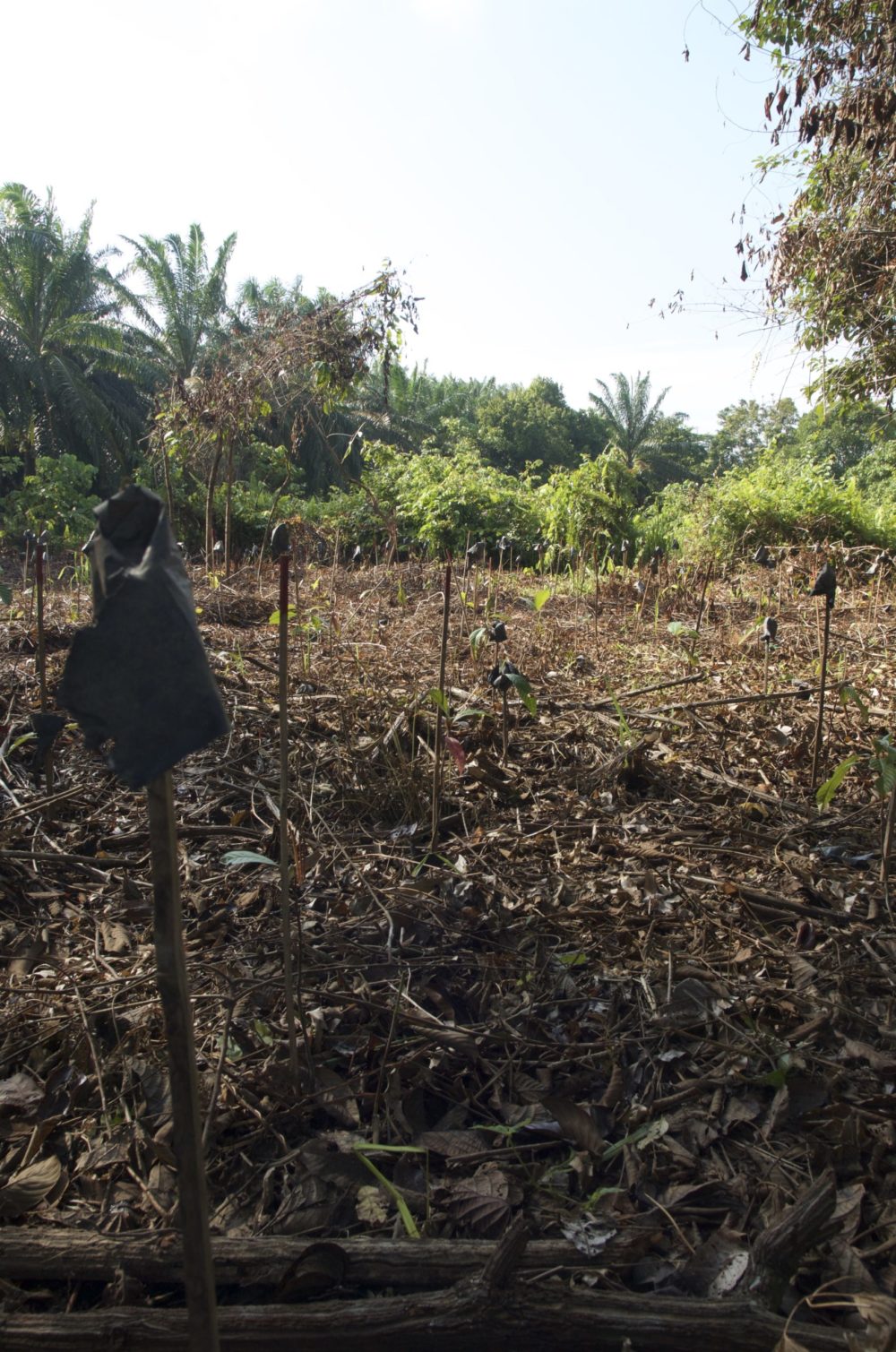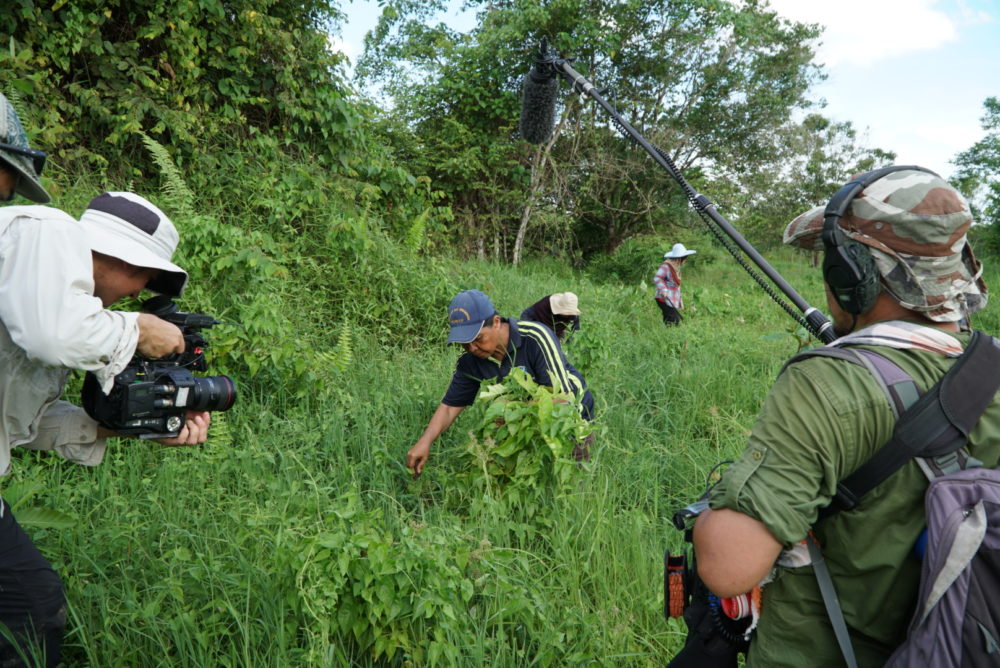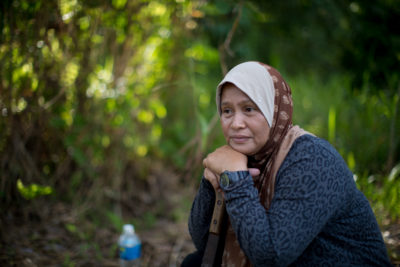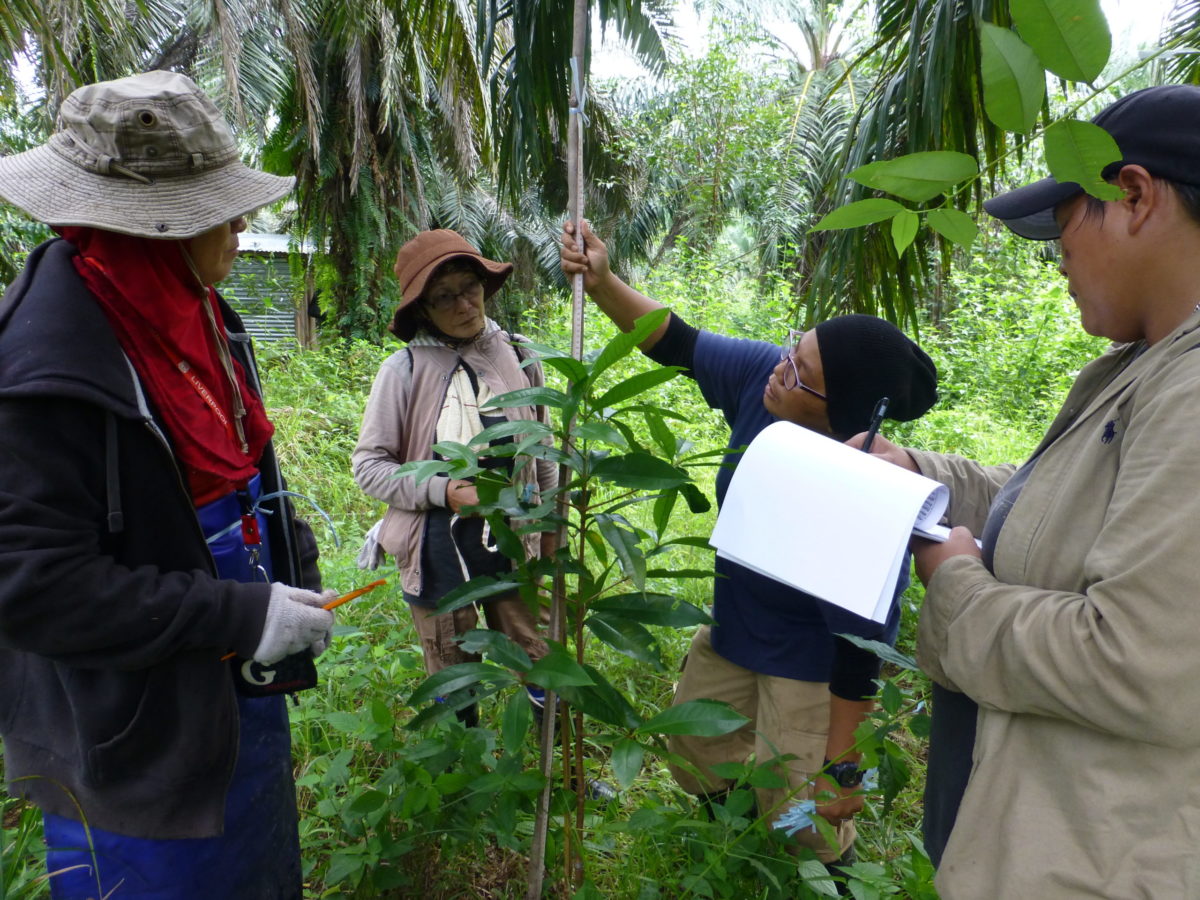
We recreate contiguous corridors of forest along the Kinabatangan to support key populations of forest-dependent species in the Kinabatangan

Forest degradation and fragmentation in the Lower Kinabatangan are one of the major threats to the long-term survival of most wildlife species in the area. Our goal is to establish forest linkages that reconnect key forest fragments and allow orang-utans, elephants, and other wildlife to move freely along the banks of the Kinabatangan river.
We also want to increase the overall availability of food sources for wildlife, enhance practical knowledge of the design and the methodologies of forest restoration programmes, and provide alternative sources of income to the local community (direct employment and purchase of seedlings from home tree nurseries).
Since the beginning, the team has planted more than 200,000 trees that are still alive today.
Planting a seedling is not the most difficult part of the job. Indeed, in Kinabatangan, the seedling mortality rate would reach 95 to 100% with no maintenance because of predators and weeds. The seedling survival rate fluctuates according to tree species, location, weather conditions, and damages caused by wildlife. However, thanks to the dedication and the intensive maintenance efforts of the team, we are able to reach an average of about 75% survival rate after 3 years. To enhance their chance of survival, the team attends to each seedling on a regular basis for manual weeding and clearing of competing grass.
When animals start to use the planting sites as a food source or as sites for the deposit of their waste, they introduce and disseminate new seeds that in turn can germinate in the plots, mimicking the natural process of forest regeneration. More than 50 different species of trees have been identified in some of our planting sites which originally only had 20 planted.

